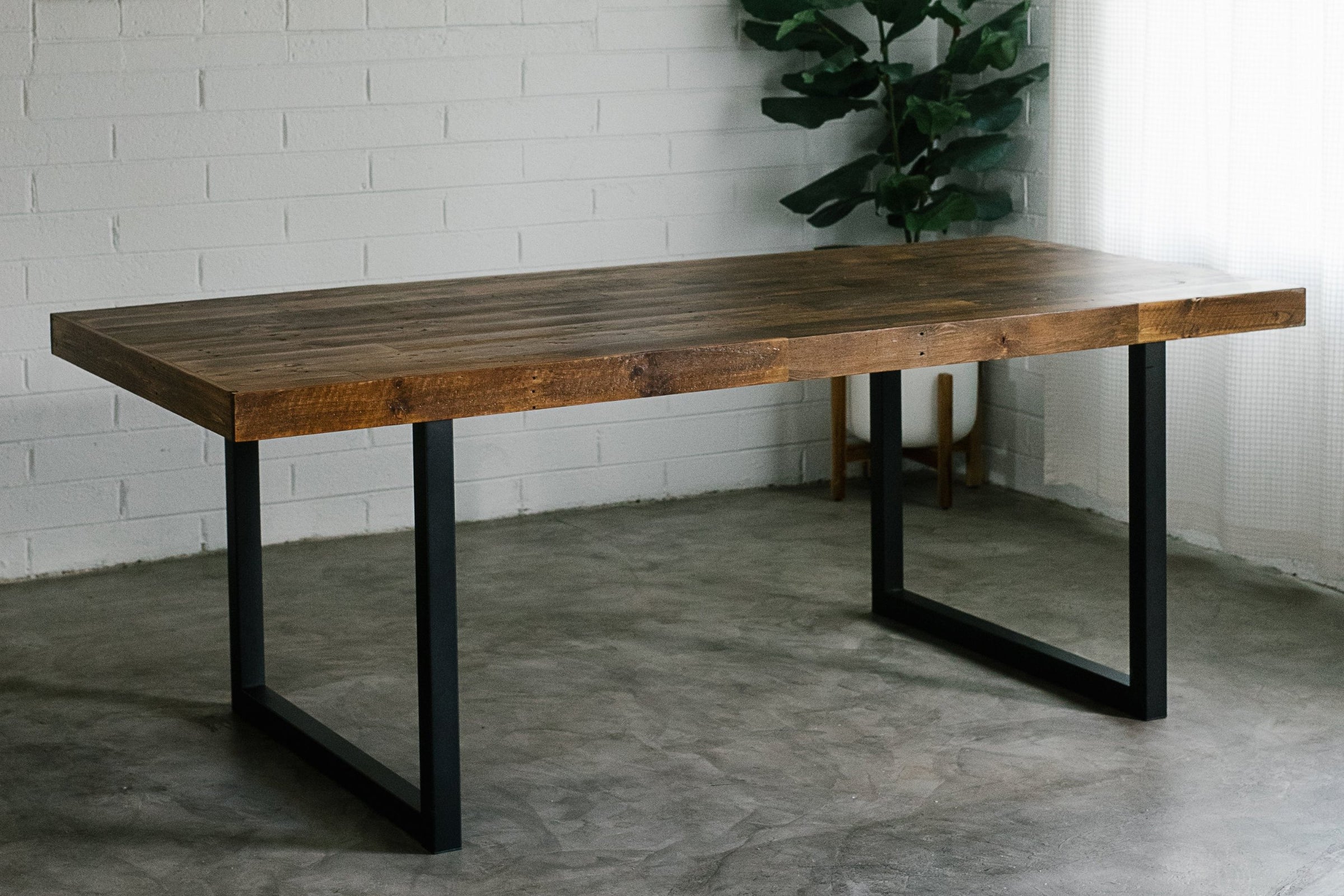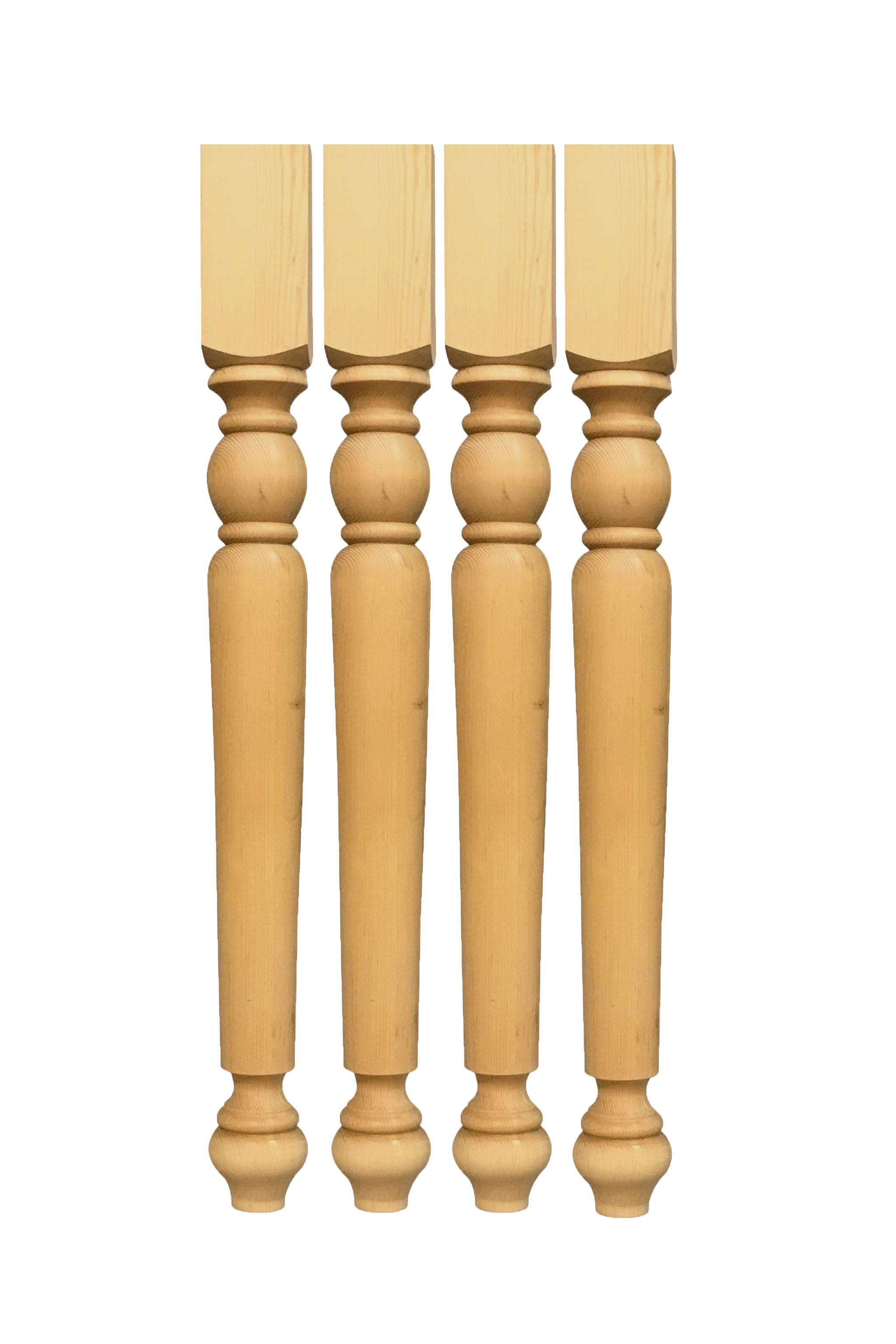Achieve Modern Beauty Using Sleek Dining Table Legs Wood Styles
Achieve Modern Beauty Using Sleek Dining Table Legs Wood Styles
Blog Article
Secret Factors to Remember for Table Legs Wood Choices
When choosing wood for eating table legs, numerous crucial aspects necessitate mindful factor to consider to make certain both performance and visual appeal. The choice of wood kind, identified by its durability and distinct grain patterns, plays a crucial duty in the general style and durability of the piece.
Wood Types and Attributes
When choosing timber for dining table legs, it is necessary to recognize the unique qualities of various timber kinds. Various timbers provide unique benefits and downsides, affecting both the longevity and aesthetic charm of the finished product.
Oak, recognized for its excellent sturdiness, also features a famous grain that can add personality to the table. Cherry wood, with its abundant shade that grows over time, supplies a luxurious appearance but might call for more upkeep to avoid scrapes.
On the various other hand, softwoods like yearn and fir are extra affordable and easier to collaborate with, yet they are much less durable than hardwoods. Pine is lightweight and features a cozy, rustic appearance, making it a popular option for casual dining settings. Nonetheless, it is much more at risk to scratches and damages.
Comprehending these characteristics will certainly aid in making an educated choice to make sure the legs of the eating table meet both functional and aesthetic demands.
Grain Patterns and Looks
The timber's grain is not simply an aesthetic quality; it imparts a special individuality and charm to each piece. Different timber varieties exhibit distinctive grain patterns, varying from the straight lines of maple to the complex swirls of oak and the striking number of walnut.
In addition, the alignment and scale of the grain can influence the perceived size and elegance of the table. Larger, much more noticable grains might offer a strong, significant impact, while finer, subtler grains can develop a fine-tuned, understated look. Additionally, the finishing procedure can additionally enhance these patterns, highlighting the natural beauty of the timber and bringing out abundant colors.
Inevitably, the selection of grain pattern should integrate with various other style aspects, such as the tabletop and bordering furnishings, guaranteeing a natural aesthetic that boosts the eating experience. Thoughtful option of timber grain not only adds to the table's beauty yet additionally shows the owner's taste and design.
Resilience and Strength
The sturdiness and stamina of table legs are critical considerations for guaranteeing long life and stability in any type of dining area. Picking the best timber is crucial, as various types display differing levels of strength. Woods such as oak, cherry, and maple are commonly preferred for their intrinsic toughness and resistance to wear. These materials not only endure everyday usage however likewise support heavy tons, making them excellent for eating tables that often suit several restaurants. Dining Table Legs Wood.

Eventually, buying top notch timber and robust construction methods will produce a dining table that stands the examination of time, while supplying a dependable structure for many dishes shared amongst friends and family. Prioritizing sturdiness and toughness makes sure that your table remains practical and aesthetically pleasing for many years to come.
Maintenance and Treatment
Correct upkeep and care are important for protecting the resilience and strength of table legs made from wood. Regular cleaning is vital; making use of a soft, damp fabric ensures that dust and debris do not build up, which can cause scratches and monotony. It is advisable to stay clear of harsh chemicals or abrasive products that could damage the finish.
Additionally, using an appropriate timber gloss or wax occasionally can advice help maintain the luster and shield the wood from wetness and spills. Nevertheless, it is crucial to adhere to the supplier's recommendations regarding the sort of product to utilize, as certain surfaces may react adversely to certain chemicals.
Humidity and temperature level variations can additionally influence wood table legs, causing them to warp or crack. It's finest to place the table far from straight sunshine and warm sources. If the table legs have any scratches or damages, resolving these quickly can stop further damages.
Finally, regularly examining the joints and screws for tightness is crucial to maintain structural honesty (Dining Table Legs Wood). By adhering to these maintenance methods, property owners can ensure their wooden dining table legs stay enticing and functional for several years ahead
Ecological Factors To Consider
When picking wood for dining table legs, it's necessary to take ecological factors to consider into account. The sourcing and sustainability of wood are extremely important in reducing environmental effect. Going with timber from certified sources, such as those backed by the Forest Stewardship Council (FSC), guarantees that the lumber is collected properly, promoting forest conservation and biodiversity.

Moreover, local sourcing of timber reduces transport exhausts, supporting regional economic situations while decreasing ecological influence. It is also advisable to be familiar with the timber's therapy and ending up procedures, as specific chemicals can be damaging to both human health and wellness and the environment. By prioritizing sustainable timber options, consumers can add to ecological preservation while delighting in the resilience and charm of their table legs.
Verdict
In verdict, choosing wood for eating table legs demands careful factor to consider of different factors, consisting of timber types, grain patterns, and durability. Upkeep requirements and ecological sustainability more impact timber choices, stressing the importance of sourcing from accredited or redeemed materials.
When choosing wood for dining table legs, several important factors require mindful consideration to make certain both capability and aesthetic appeal.Appropriate maintenance and treatment are essential for preserving the longevity and strength of eating table legs made from wood.When picking timber for dining table legs, it's vital to take environmental factors to consider into account. By prioritizing lasting timber options, consumers can contribute to environmental preservation while taking pleasure in the sturdiness and beauty of their dining table legs.
In conclusion, selecting wood for eating table legs necessitates careful consideration this page of different variables, consisting of timber kinds, grain patterns, and toughness. Dining Table Legs Wood.
Report this page